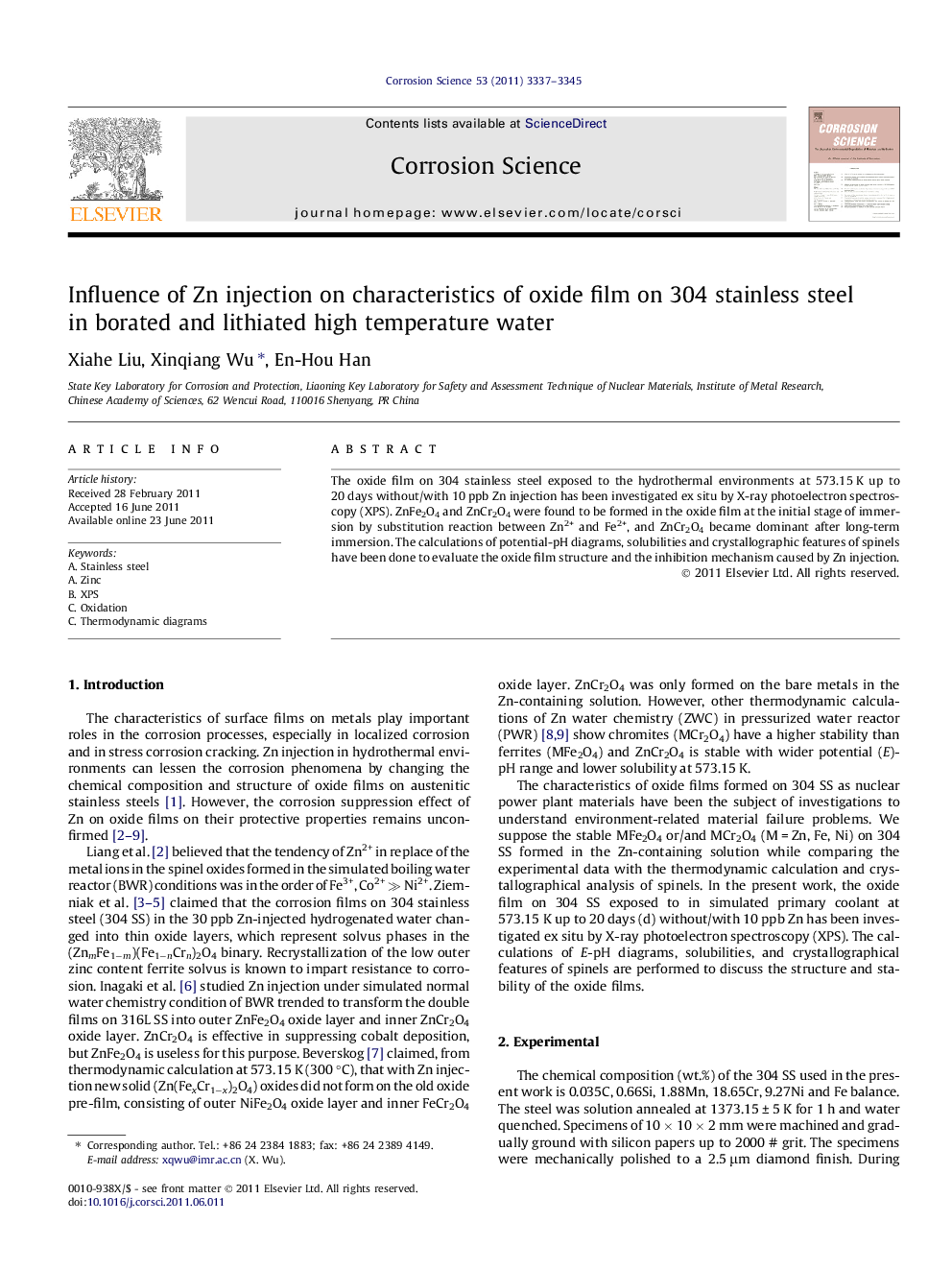| کد مقاله | کد نشریه | سال انتشار | مقاله انگلیسی | نسخه تمام متن |
|---|---|---|---|---|
| 1469733 | 990308 | 2011 | 9 صفحه PDF | دانلود رایگان |

The oxide film on 304 stainless steel exposed to the hydrothermal environments at 573.15 K up to 20 days without/with 10 ppb Zn injection has been investigated ex situ by X-ray photoelectron spectroscopy (XPS). ZnFe2O4 and ZnCr2O4 were found to be formed in the oxide film at the initial stage of immersion by substitution reaction between Zn2+ and Fe2+, and ZnCr2O4 became dominant after long-term immersion. The calculations of potential-pH diagrams, solubilities and crystallographic features of spinels have been done to evaluate the oxide film structure and the inhibition mechanism caused by Zn injection.
► ZnCr2O4 became dominate in oxide film after long-term immersion under ZWC condition.
► ZnCr2O4 shows wide E-pH region and low solubility under the simulated primary condition.
► Zn effects were rationalized by thermodynamic calculations and crystallographic analysis.
Journal: Corrosion Science - Volume 53, Issue 10, October 2011, Pages 3337–3345